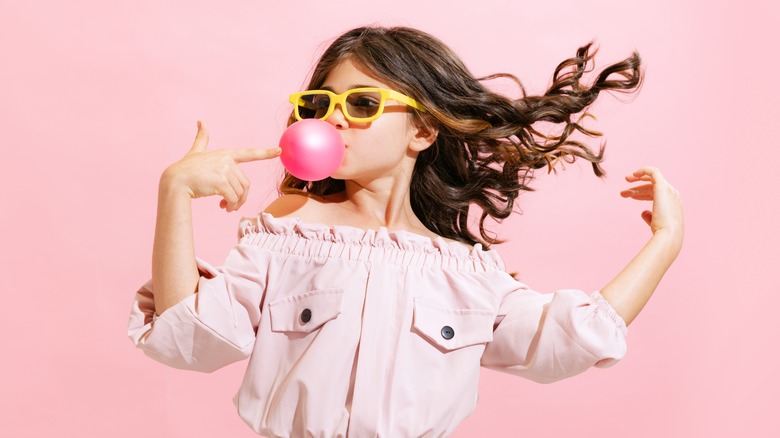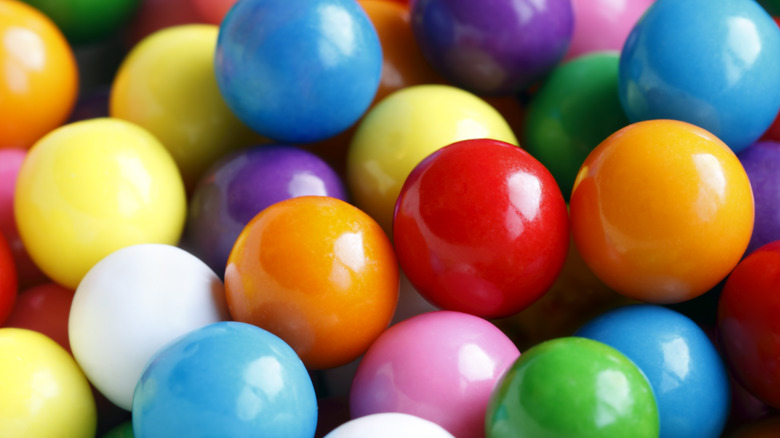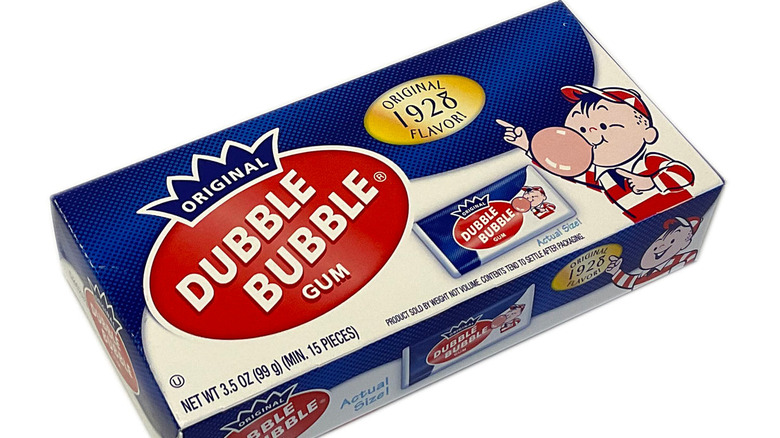The Flavor Of Bubblegum Is Pretty Much Every Fruit
Let's face it: Some folks are gum-chewers and others just don't get it. Aside from outgrown childhood memories of carefree, lip-smacking, bubble-blowing summer days, those who love bubblegum flavor are surely in the minority, right? Perhaps, but not as much as you might imagine.
In 2020, the National Confectioners Association posted research estimating that global sales of chewing gum, including the popular bubble-blowing version, would approach the $40 billion mark by 2027. That's a whole lot of gum. And statistics say about one-fourth of those gum lovers prefer the specific bubblegum flavor, from Gen X chewers all the way back to Baby Boomers.
With myriad gum flavors available today, the persistent popularity of the retro-style bubblegum taste begs the question: What actually creates the flavor inside that wrapper or gumball of chewy fun?
The answer to that question lies within the first two chewing-gum flavors created by scientist Thomas Adams, who is widely considered the inventor of flavored chewing gum. That original flavor was called tutti frutti, which translates from Italian to English as "all fruits."
All fruits and any fruits
The explosion of flavor when biting into traditional bubblegum comes from the all-fruits approach, which simulates the taste of real fruit using artificial "ester" flavors. It really comes down to smells, which are a huge component of how we taste the things we eat.
These artificial fruit combinations can be cherry, banana, and strawberry, with different manufacturers making slight flavor twists with the addition of raspberry, blueberry, or tropicals such as mango, pineapple, or kiwi. It's all about experimentation to find mixes that blend with the classic fruity bubblegum flavor.
Adams never claimed to have invented chewing gum, only the flavored versions of it. He added the tutti frutti, all-fruit essence, to an existing chewable substance called chicle, a gummy resin occurring naturally in Mexican and Central American sapodilla trees. Ancient Mayan and Aztec civilizations locked into its medicinal potential well before Adams procured and developed chicle for widespread recreational use.
As the popularity of chewing gum soared, chicle was eventually replaced with synthetic ingredients due to limited resources tied to a specific tree. But that ever-popular bubblegum flavor persists, as does the famous retro-pink color.
Chewing gum versus bubblegum
It's important to note that bubblegum flavor is separate from the bubblegum product. There's standard chewing gum, and then there's the bubble-blowing version of it, which came after Adams unleashed his tutti frutti (all-fruit) flavored gum into mouths across the globe. His invention didn't give him the power to blow giant bubbles, competing with friends and foes for bubble-gum titles.
That credit goes to Walter E. Diemer, an accountant for a rival gum company called Fleer. He was only 23 years old in 1929, when dinking around in the company lab, answering a challenge to find a way of blowing bubbles with their gum. He also gets kudos for the now-iconic pink color, which happened to be the only hue of food coloring at hand that day. He named it Dubble Bubble, which initially sold for a penny per piece.
Dubble Bubble still exists today, sold in dozens of flavors — including the original fruity version from 1928. And bubblegum as a standalone flavor now appears in countless products, from ice cream to lip gloss, jelly beans, and syrups.



